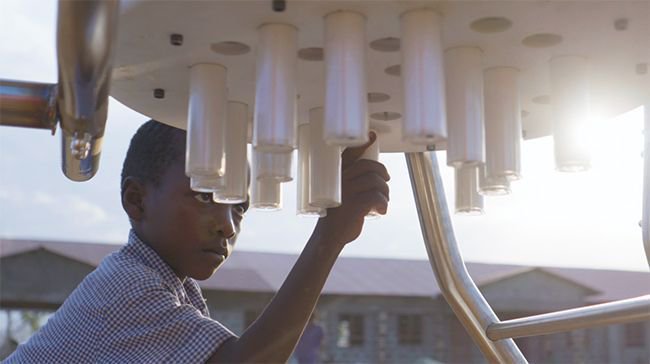
Installing a solar power system in your home will immediately provide you with savings and the good sense that you’re helping the planet by limiting your carbon footprint.
You’ll know that every time you turn on your lights, you’re using electricity you generated, through the use of the sun rays and without emitting CO2 into the atmosphere. Even more, you won’t be dependent on the electrical grid and susceptible to blackouts in case of natural disasters or emergencies or power plants miles away from your home that still run on coal or other forms of fossil fuel. Such are the environmental benefits of solar energy.
But in many parts of the undeveloped world, getting electricity is not as simple as turning on a lamp. Indeed, many homes in extremely poor areas don’t even have a switch or the infrastructure may not be reliable at all.
In those regions, solar panels are giving people truly a light at the end of the tunnel.
A report from the International Renewable Energy Agency (IRENA) notes that solar power and other renewable electricity sources are providing an estimated 146 million people with access to energy.
These people often live in rural communities that lack electricity or gas connections, or the existing ones may be too expensive.
A pilot project in Africa is not only taking electricity to remote areas, but is also combating a social ill that affects million of children strangled by poverty.
Solar Cow Project
A south Korean company named Yolk Station is using the power of the sun to fight child labor.
They do this through their Solar Cow Project, whereby they installed a solar-powered charging station in a steel frame of a cow, inside a school in Pokot, Kenya, giving parents free electricity in exchange for sending their kids to school.
“Over 150 million children are suffering from child labor and they are deprived of childhood and educational opportunities due to it. The solar cow project aims to help prevent the serious issue of child labor and provide educational opportunities,” the company explains in its website.
A 2008 report by International Labour Organization (ILO) notes that poverty is its single largest cause. Income from a child’s work is believed by some parents in developing countries to be crucial for the survival of their household. Most children work in fishing, forestry, livestock herding and aquaculture, while the rest work in quarrying and mining. All of these industries may be dangerous and impede the kids from attending classes.
“Therefore, its solution should target to persuade the parents by compensating with aid value that is at least equivalent to or larger than the economic costs of child labor wage that discourage parents from sending children to school,” Yolk Station says.

Students at the school are provided with Power Milk, portable batteries shaped to look like bottles of milk that attach to the structure as udders hanging off the underside of a makeshift cow. They are simple to screw and unscrew onto the frame.
The design is not by mere coincidence, but based on observations and cultural views.
Cows are a valued commodity in this part of the world, providing nutritional energy to a family each day and as such, the solar cow with its solar panel takes on this value as well, providing the household with an energy lantern.
“Students come in the morning and charge their Power Milk through Solar Cow, so that after class, they go home with a fully charged power source that serves the entire household,” Yolk cites.
“These Power Milk contain enough capacity to meet most needs for electricity for the average local household: charging cell phones and powering a flashlight, a radio, or other gadgets. By providing free access to the electricity, we in practice help families save up to 20 percent of their average monthly income that they’ve spent for electricity,” it adds.
Yolk Station published a video illustrating how the pilot project works.
“Furthermore, according to analysis of our preliminary project in Pokot, Kenya, it saves 4-6 hours of walking to the nearest charging station, which was previously one of their very limited means of getting access to electricity. The saving of such costs is used as financial compensation to parents for sending children to school instead of to a workplace,” Yolk says.
The company is planning on expanding this pilot program to other parts of the world, such as India and Indonesia, which have similar issues of child labor and poverty.
This is just an example of how the use of solar panels can benefit not only the planet's environment, but also the social fabric of communities.
HahaSmart Blog - More Solar Tips and Guide
HahaSmart News - Stay Informed
Your Solar Incentives - See Credits and Incentives in Your Area
Check Your Home's Solar Price - See How Much You Save
Register Now - Unlock The Lowest Solar Prices in Your Area


Input your address to see if it is solar friendly and how much you can save with solar.
Great. Your address is perfect for solar. Solar incentive is still available. Select monthly utility cost and calculate the size of solar system you will need now.
| kw System size | years Payback period | Lifetime savings |
No money down, 100% finance is available.
|
|
Sign up to learn how solar panels can help your environment and pocket! |
Comments